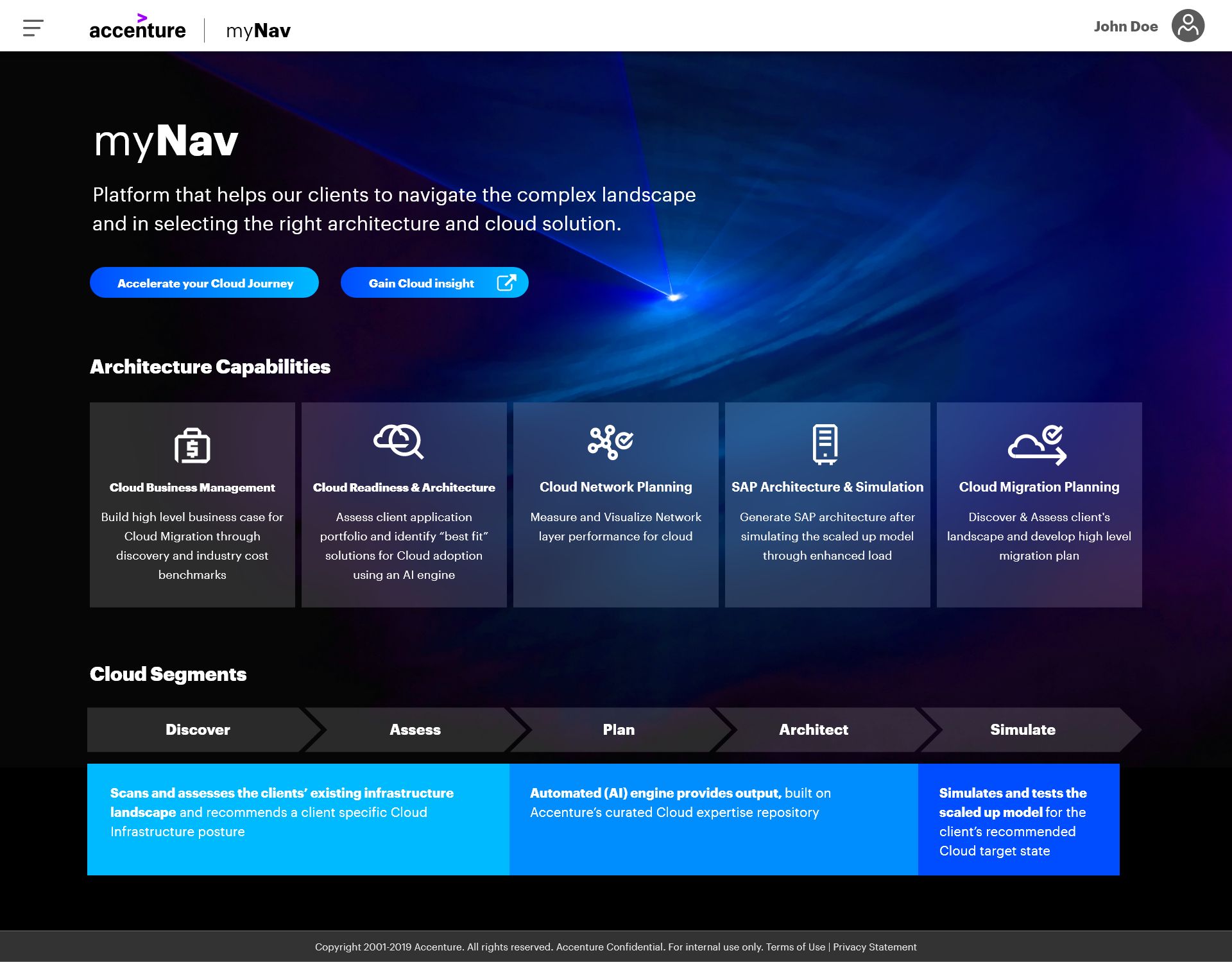Accenture has launched a cloud simulation service through which DevOps teams can better determine which workloads will run best on different cloud computing environments.
Kishore Durg, growth and strategy lead for cloud at Accenture Technology Services, said myNAV is a cloud service created by Accenture that leverages machine learning algorithms and other forms of artificial intelligence (AI) to leverage a knowledge base Accenture developed during its decade-plus working on cloud projects. DevOps teams can leverage that expertise without requiring Accenture personnel onsite to account for deployment variables such as technology infrastructure, types of application workloads, data, operational models and even business outcomes before committing to a specific cloud computing platform, he said.
DevOps teams can also employ myNAV to engage in canary testing of application workloads, Durg added.
 DevOps teams employing myNAV are guided through a three-step process that starts with scanning and assessing the existing infrastructure, application and data landscape to recommend the most appropriate cloud architecture. An AI engine developed by Accenture then accesses a knowledge base curated by Accenture to come up with a recommended enterprise architecture. Finally, simulation and testing tools are applied to make sure the IT environment will scale as required.
DevOps teams employing myNAV are guided through a three-step process that starts with scanning and assessing the existing infrastructure, application and data landscape to recommend the most appropriate cloud architecture. An AI engine developed by Accenture then accesses a knowledge base curated by Accenture to come up with a recommended enterprise architecture. Finally, simulation and testing tools are applied to make sure the IT environment will scale as required.
At the end of the process the DevOps team is presented with a bill of materials that resembles the bill of materials that might be presented when building a house, said Durg.
Despite commodity pricing models, not all cloud computing platforms are created equal. Various attributes of application workloads lend themselves better to different attributes of cloud computing platforms. It’s not uncommon for IT organizations to find themselves rolling back applications from a cloud platform after encountering performance issues or discovering that cost of running a specific type of application on a cloud exceeded their available budget.
Durg said 3-D visualization tools make it a lot easier to determine which cloud platform to employ and derive the maximum value from that investment by ensuring the cloud environment chosen is optimized for that application workload. Accenture research suggests that as many as two-thirds of organizations are not getting the maximum value from their cloud investments, he noted, and most of those issues stem from the cloud platform being poorly configured, added Durg.
Whether by accident or deliberate, most IT organizations are employing multiple clouds to build and deploy applications, but their cloud platform selection process is often haphazard. Developers often default to the cloud platform that is easiest for them to access, which could create cloud platform lock-in. Cloud simulation platforms make it easier for the entire IT team to better appreciate the trade-offs in selecting one cloud platform over another.
Of course, most IT teams would like to unify the management of multiple clouds under a single console through which they can more easily play one service provider off against another using a hybrid cloud computing model. Until that day arrives, however, most IT organizations will find it advantageous to know as much as possible about any cloud platform before making a decision they may come to regret.





